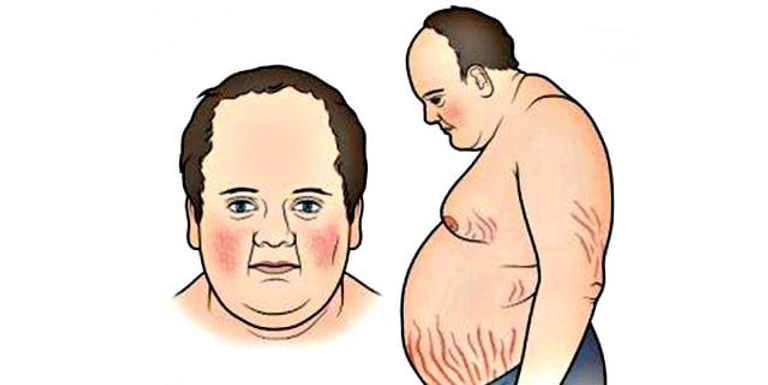Do you struggle with poor posture and limited mobility due to the unwelcome presence of a buffalo hump? You’re not alone. This article delves into the anatomy, causes, and health risks associated with the buffalo hump, shedding light on why it occurs and how it impacts your well-being.
But that’s not all – we’re here to guide you through the diagnostic procedures, treatment options, and preventive measures that can help you overcome this challenge. If you’re ready to bid farewell to the discomfort and embrace a healthier you, keep reading to discover the insights and solutions that await you.
Buffalo hump, also known as cervicodorsal fat pad, is characterized by abnormal fat accumulation at the base of the neck or upper back.
The condition is named after the hump-like appearance found on the back of buffalo. Although the buffalo hump is not life-threatening, it can cause discomfort for those affected.
In this article, we will explore the anatomy of the buffalo hump, why it occurs, associated health risks, how it can be diagnosed, available treatment options and preventive measures.
Anatomy of the Buffalo Hump
The buffalo hump is located in the cervicodorsal region, which includes the area between the base of the neck and the upper back. The hump consists of an accumulation of excess fatty tissue, which can cause a noticeable bulge or prominence. The exact size and shape of the buffalo hump can vary between individuals.

Causes of Buffalo Hump
Buffalo hump can be caused by various factors, including:
- Hormonal Imbalance: One of the most common causes of buffalo hump is an imbalance in hormonal levels. This can occur due to conditions such as Cushing’s syndrome, which leads to excessive production of cortisol, a hormone responsible for regulating metabolism and stress response. High cortisol levels can result in the redistribution of fat, leading to the accumulation of fat in the cervicodorsal region.
- Obesity: Excessive weight gain or obesity can contribute to the development of a buffalo hump. When individuals gain weight, fat is deposited in different parts of the body, including the cervicodorsal region. The accumulation of fat in this area can result in the formation of a hump-like structure.
- Lipodystrophy: Lipodystrophy is a rare disorder characterized by abnormal fat distribution in the body. Some forms of lipodystrophy can lead to the development of a buffalo hump.
- Prolonged Use of Certain Medications: Certain medications, such as corticosteroids, antiretroviral drugs used to treat HIV, and some anti-seizure medications, have been associated with buffalo hump formation.
Health Risks Associated with Buffalo Hump
While buffalo hump is primarily a cosmetic concern, it can also be associated with various health risks. These include:
- Posture and Spinal Alignment Issues: The presence of a buffalo hump can disrupt the natural alignment of the spine, leading to poor posture and potential complications, such as chronic back pain.
- Limited Range of Motion: In some cases, the buffalo hump can limit the mobility of the neck and upper back, resulting in a decreased range of motion and discomfort during movement.
- Psychological Effects: The physical appearance changes caused by the buffalo hump can lead to psychological effects such as decreased self-esteem, body image issues, and social anxiety.
Diagnostic Procedures
To diagnose a buffalo hump, a healthcare professional will perform a physical examination and inquire about the patient’s medical history. Additional diagnostic procedures may include:
- Imaging Tests: X-rays, magnetic resonance imaging (MRI), or computed tomography (CT) scans may be used to visualize the cervicodorsal region and assess the extent of the buffalo hump.
- Blood Tests: Blood tests may be conducted to evaluate hormonal levels and rule out conditions such as Cushing’s syndrome or hormonal imbalances.
Available Treatment Options
Several treatment options are available for managing buffalo hump, depending on the underlying cause and the severity of the condition. These include:
- Lifestyle Changes: For individuals with buffalo hump caused by obesity, making lifestyle modifications such as regular exercise and a healthy diet can help reduce excess fat and alleviate the hump.
- Medications: In some cases, medications can be prescribed to address hormonal imbalances or underlying medical conditions contributing to the buffalo hump.
- Liposuction: For individuals with severe or persistent buffalo hump, surgical liposuction may be considered. Liposuction involves the removal of excess fat deposits through a minimally invasive procedure.
- Physical Therapy: Physical therapy may be recommended to improve posture, strengthen the muscles in the neck and back, and alleviate any associated pain or discomfort.
Preventing Buffalo Hump
While some causes of buffalo hump cannot be completely prevented, certain measures can help minimize the risk or progression of the condition:
- Maintain a Healthy Weight: By adopting a balanced diet and engaging in regular physical activity, individuals can maintain a healthy weight and reduce the likelihood of excess fat accumulation in the cervicodorsal region.
- Be Mindful of Medication Side Effects: If you are prescribed medications known to potentially contribute to buffalo hump formation, discuss the potential side effects with your healthcare provider and explore alternative treatment options if necessary.
- Monitor Hormonal Levels: Regular monitoring of hormonal levels can help identify any imbalances or abnormalities that may contribute to buffalo hump formation.
- Practice Good Posture: Maintaining proper posture throughout the day can help alleviate stress on the neck and back, reducing the risk of posture-related issues and the development of a buffalo hump.
In conclusion, buffalo hump, characterized by the accumulation of excess fat in the cervicodorsal region, can be caused by hormonal imbalances, obesity, lipodystrophy, or certain medications. While primarily a cosmetic concern, it can also lead to health risks such as poor posture, limited range of motion, and psychological effects.
Diagnosis typically involves physical examination and diagnostic tests. Treatment options range from lifestyle changes to surgical interventions, depending on the underlying cause and severity of the condition. By practicing prevention strategies and seeking appropriate treatment, individuals can effectively manage buffalo hump and improve their overall well-being.
